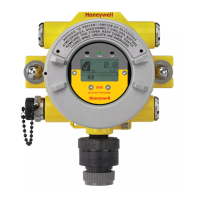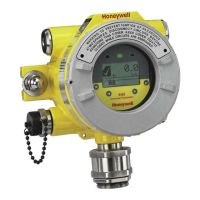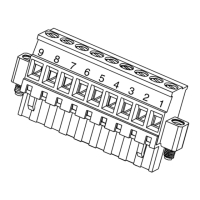XNX Universal Transmitter Quick Start Guide
52
5. Applythetargetgastothesensor.PassthegasthroughtheFlow
Adaptoratarateof0.5l/m±0.2l/m.
NOTE:
Sensors should be calibrated at concentrations representative of those to be
measured. It is always recommended that the sensor is calibrated with the
target gas it is to detect.
CAUTION
Where the user calibrates any sensor using a dierent gas, responsibility for identifying and
recording calibration rests with the user. Refer to the local regulations where appropriate.
6. Ensurethatthesensorandthevicinityarounditisclearalltraces
ofthecalibrationgasbeforecontinuing.Thisistoavoidtriggering
spuriousalarms.Ifcalibrationfailsatanypoint,discardthecartridge
andreplacewithanewone.
7. Removethetestequipment,rettheweatherproofcaptothesensor
(ifpreviouslyremovedforthetest)andreturnthesystemtonormal
operation.
8.1.6 MPD Flammable Sensor
The pellistors used in the flammable gas sensor can suffer from a loss of
sensitivity when in the presence of poisons or inhibitors, e.g., siliconse, sulfides,
chlorine, lead, or halogenated hydrocarbons. The pellistors are poison resistant
to maximixe the operational llife of the flammable sensor.
8.1.7 Cross Calibration procedure for MPD-CB1
CAUTION
Where the user calibrates any sensor using a dierent gas, responsibility for identifying and
recording calibration rests with the user. Refer to the local regulations where appropriate.
When the MPD-CB1 Combustible LEL sensor is to be calibrated with a gas
which is different from the gas or vapor to be detected, the following cross
calibration procedure should be followed:
NOTE
• The rst table on page 49 lists the gases according to the reaction they
produce at a given detector.
• An eight star (8*) gas produces the highest output, while a one star
(1*) gas produces the lowest output. (These are not applicable at ppm
levels.)

